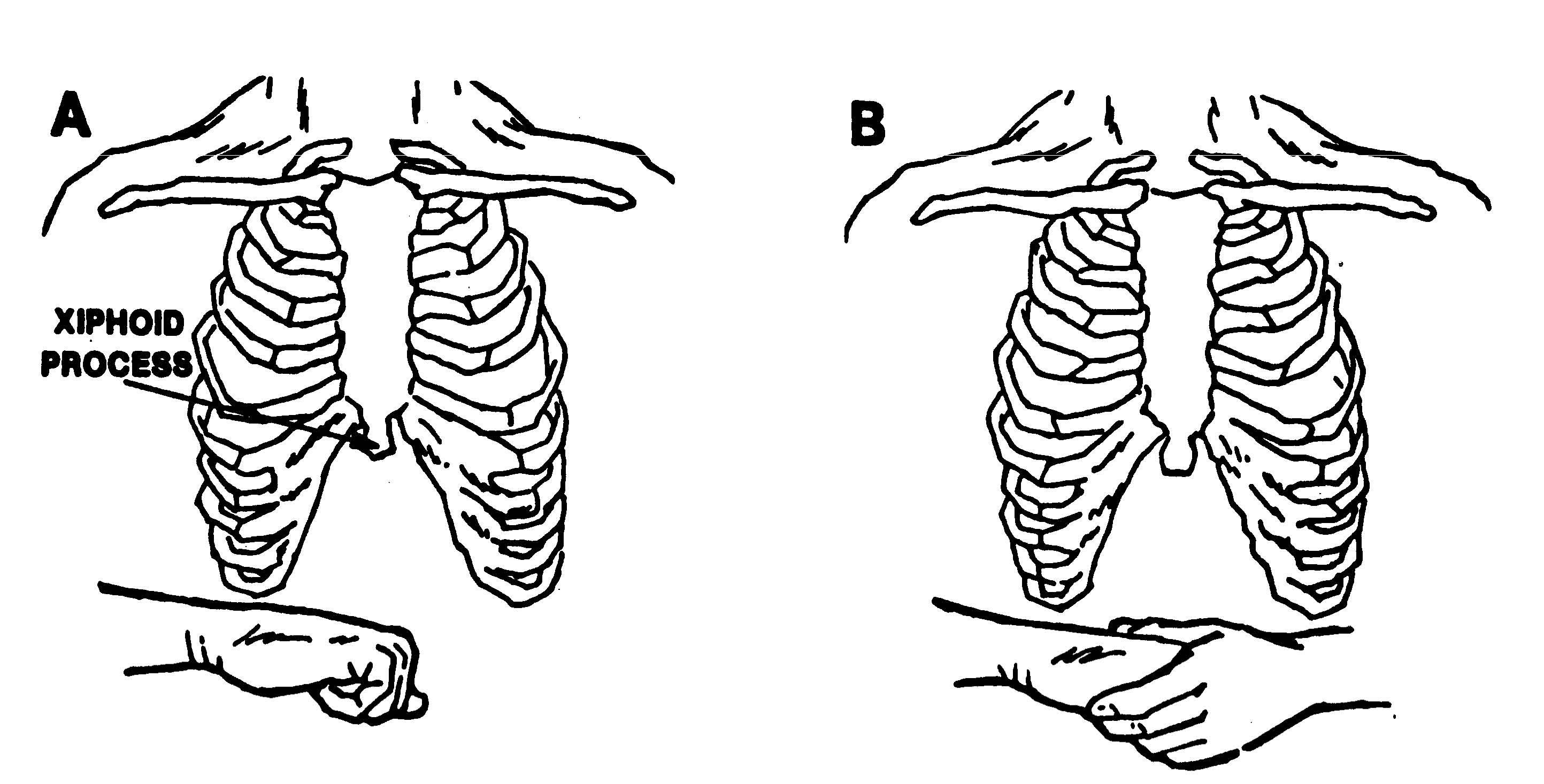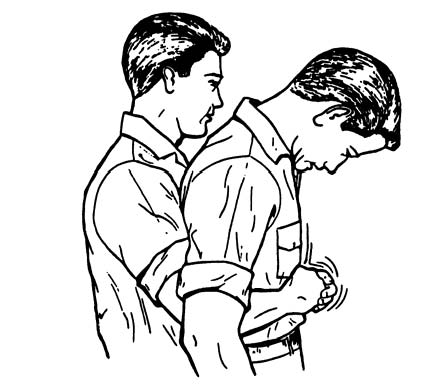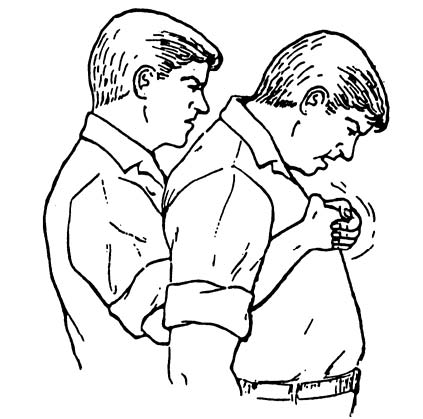Cardiopulmonary Resuscitation
LESSON 5: Remove an Upper Airway Obstruction in an Adult
5-5
5-5. ASSIST A STANDING OR SITTING CONSCIOUS CASUALTY WITH POOR AIR EXCHANGE OR COMPLETE BLOCKAGE
A casualty with poor air exchange is treated as though he has a complete blockage since both conditions can result in unconsciousness and death if the obstruction is not removed.
a. Call for Help. If you are alone, yell for help unless a combat situation dictates otherwise. If you have someone with you, have him obtain medical help (telephone, radio, run to get professional medical help, and so forth) if it can be done quickly. If only one person is available, have him obtain medical help and then return to assist you. You may need his help to perform two-rescuer cardiopulmonary resuscitation should the casualty's heart stop beating.
b. Position Yourself Behind the Casualty. Stand behind the casualty, slide your arms under his arm, and try to wrap your arms around his waist. This helps to support the casualty and helps you to determine whether abdominal thrusts or chest thrusts should be used.
c. Administer Manual Thrusts. A manual thrust acts like an artificial cough by forcing air out of the casualty's lungs. The increased air pressure caused by the thrusts should dislodge the obstruction and cause it to be expelled. The thrust may be administered either to the casualty's abdomen or to the casualty's chest. The abdominal thrust is usually preferred, but the chest thrust is used if the casualty is noticeably pregnant, if the casualty has abdominal injuries, or if the casualty is so large that you cannot wrap your arms around his waist. Do not alternate between abdominal and chest thrusts. Each manual thrust is performed with the intent of dislodging the obstruction.
(1) Abdominal thrusts.
(a) Wrap your arms around the casualty's waist.
(b) Make a fist with one hand. Place the fist against the casualty's abdomen in the midline slightly above the navel and well below the tip of the xiphoid process. The thumb side of your fist should be against the abdomen (figure 5-2 A). Never place your fist over the xiphoid process or over the lower margin of the rib cage. A thrust delivered directly to the xiphoid process or ribs can result in a fractured sternum (xiphoid process separated from sternum) and/or fractured ribs.
(c) Grasp your fist with your other hand (figure 5-2 B).
Figure 5-2. Placement of hands for administering an abdominal thrust to a
casualty standing or sitting.
(d) Thrust into the casualty's abdominal region (figure 5-3) using a quick inward and upward motion, and then relax the hold.
Figure 5-3. Administering an abdominal thrust to a standing casualty.
(e) Continue administering abdominal thrusts until the obstruction is expelled or until the casualty loses consciousness. If the casualty loses consciousness, proceed to administer the finger sweep and modified abdominal thrusts described in paragraph 5-6. Vomiting may occur when the abdominal thrust is used. Clear any vomitus from the casualty's mouth so he will not inhale the vomitus.
(2) Chest thrusts.
(a) Place your arms directly under the casualty's armpits and encircle his chest with your arms.
(b) Make one hand into a fist and place the thumb side of the fist against the lower half of the casualty's sternum. Make sure that the fist is placed above the xiphoid process and the lower margin of the rib cage. Also make sure that the fist rests on the sternum and not on the ribs.
(c) Grasp your fist with your free hand.
(d) Deliver a quick inward thrust (figure 5-4); then relax the hold. The thrust should depress the casualty's sternum 1 1/2 to 2 inches.
(e) Continue administering chest thrusts until the obstruction is expelled or until the casualty loses consciousness.
Figure 5-4. Administering a chest thrust to a standing casualty.
d. Position Casualty for Modified Thrusts, If Needed. If the casualty loses consciousness while you are performing manual thrusts, continue to support the casualty's weight and gently lay the casualty on his back with his arms at his sides. Support the casualty's head as you lower him. Make sure that the casualty is lying on a firm surface since you may need to administer CPR once the obstruction is expelled.




